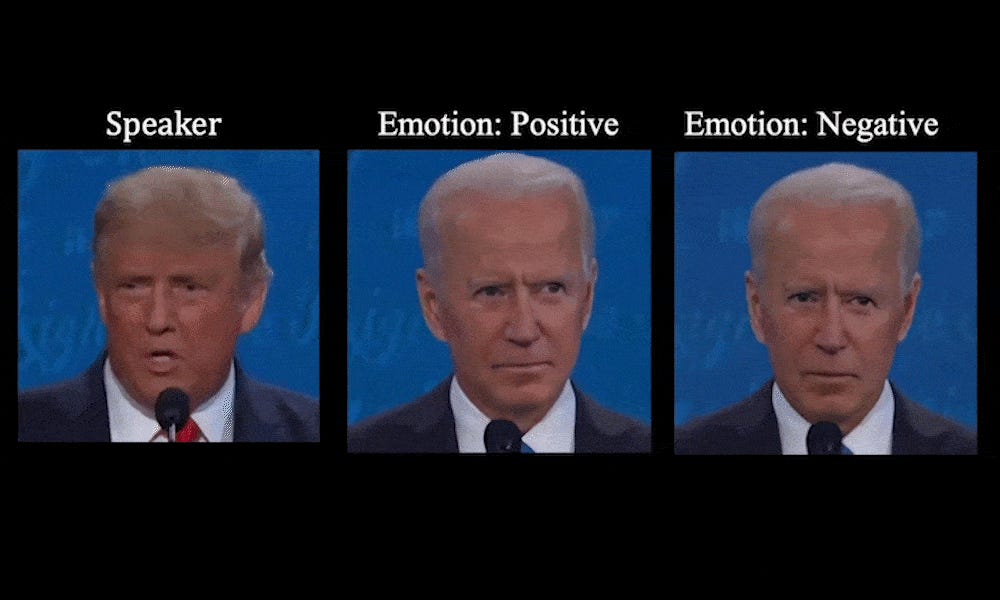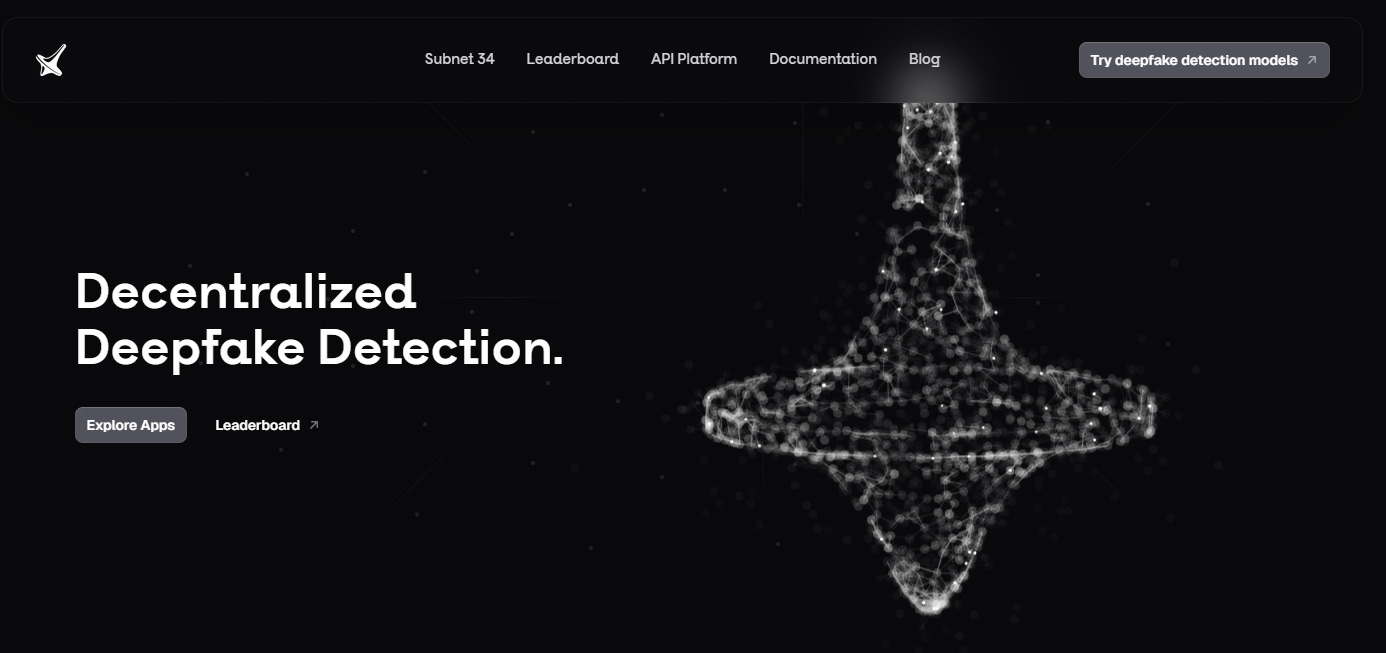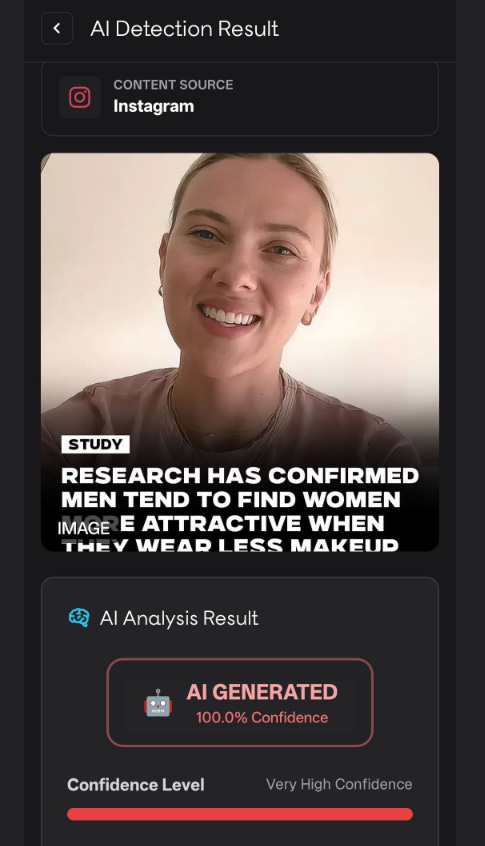Stop Worrying About TAO: This Bittensor Subnet is Fighting for the Truth
And why subnet pilling is better than TAO pilling
I’ve had a bit of a reality check recently.
And its down to the fact that I can’t get through to anyone new about the massive potential of Bittensor and how we need it for a plentiful future.
Your local barista? Would love to know if that rage-bait Instagram photo that ruined her morning was actually real by running it through a mobile app from Bitmind (Subnet 34).
Your wedding photographer? Doesn’t have a clue about AI. But would be very interested to know how he could ditch Google Drive and use Hippius (Subnet 75) for decentralized storage of his media at up to 2,386 times cheaper than alternatives like Dropbox.
Your family doctor? Has no time for crypto. But would love to get a second opinion from a tricky skin cancer scan with Safe Scan (Subnet 76), reducing fear of misdiagnoses.
I knew all this, but eventually something topped me in my tracks that made me understand.
Among the many YouTube and podcasts I consume on Bittensor (actually all of them), Siam Kidd mentioned something that hit home.
I was TAO-pilling people instead of subnet-pilling them.
Trying to explain the entire ecosystem when I should have started with one concrete problem it solves.
If I’d simply said to my barista, “This technology could stop AI scammers from faking your son’s voice to trick you into sending money,” she would have listened. Instead, I would have drowned her in jargon about decentralization and a complex consensus mechanism.
This isn’t just my problem. Every time I mention Bittensor to friends or my long-suffering wife, I see the same thing happen: their eyes glaze over, they make an excuse to check their phone, or they politely change the subject.
It’s not that they’re uninterested in technology or AI, they’re just not interested in my confusing explanation of how Bittensor works.
We need to stop trying to explain Bittensor as a complex, technical system.
We need to start subnet-pilling people, as per Siam’s suggestion, and showing them how Bittensor can solve their problems, not just mine.
With that, and the Insta-obsessed barista in mind, lets dive into the first one: Bitmind.
Meet Your Digital Lie Detector
Bitmind (Subnet 34) is Bittensor’s dedicated deepfake detection subnet - essentially a digital lie detector for the AI age.
And this is no basic setup, forget the easy fakes like the guy who called me this week from “the blockchain” and wanted to unlock my all my lost Bitcoins, this is real stuff.
Picture this: You’re scrolling social media and you see a video of your favorite celeb endorsing a sketchy investment.
Or worse, a fake clip of a politician saying something wild that could swing an election.
That’s a deepfake: AI-generated content so realistic it blurs the line between truth and trickery

In 2025, with AI tools whipping up images and videos in seconds, deepfakes are exploding. Market projections say deepfake detection could be a $40 billion industry soon, touching everything from social media trust to fraud prevention in banking.
Well imagine if you had a team of expert forensic analysts working 24/7 to verify whether that video of a world leader declaring war or that voice message from your boss asking for a wire transfer is real or fake?
That’s Bitmind.
Bitmind leverages Bittensor’s decentralized network where multiple AI models compete to detect deepfakes. The more accurate a model is at spotting fakes, or fooling other models with fakes, the more TAO it earns.
This creates constant improvement as models get better at detecting increasingly sophisticated deepfakes.
Traditional detection tools typically hit around 69% accuracy on real-world content, but BitMind’s system is currently achieving an 88% accuracy rate on images.Its detection capabilities have improved by over 20% since its launch due to network competition.
Usage of BitMind’s tools is high already, with metrics showing 250,000 requests per day and growing. They are targeting 100 million monthly active users through their webpage, API and mobile apps.
What’s powerful about Bitmind is that it’s not controlled by any single government or corporation. It’s a public good, maintained by a global network of contributors who are financially incentivized to keep it accurate.
The “15-Second” Bitmind Pitch
Bitmind solves a problem everyone will face soon: How do you know what’s real in an increasingly synthetic world?
But how do we get this point across to the uninitiated?
“Bitmind is like having a team of digital Sherlock Holmes working to spot AI-generated fakes. It analyzes videos and audio to detect subtle tells that human eyes and ears miss - things like unnatural blinking patterns, inconsistent lighting reflections, or audio waveforms that don’t match human speech patterns. The more sophisticated the deepfake, the harder these models work to stay ahead, creating a self-improving system that protects us all.”
Got anything better? Please let me know what you’ve got. I love a good jingle.
Finding Your Entry Point
As a marketing-savvy TAO-piller dipping into tech, BitMind is my kind of subnet. It bridges the Tower of Babel problem I’ve ranted about before: confusing jargon across subnets.
BitMind’s site (bitmind.ai) has clear demos, and customer-friendly apps that doesn’t assume you’re a miner pro.
For beginners this is top-of-the-funnel gold. Start as a user testing their AI Detector webpage, browser extension or iOS/Android ‘AI or Not’ apps. No staking needed.
Remember my 5-stage awareness framework from Issue 13? Bitmind is perfect for people at Stage 2 and 3:
Stage 2 (Problem Aware): “I see the risks of AI deepfakes but what can I do?”
Stage 3 (Solution Aware): “Decentralized AI sounds good, but how does Bittensor specifically help with deepfakes?”
It’s also practical: Imagine marketing agencies using BitMind to verify client ads, newsletters like mine spotting AI-generated images or mainstream media outlets reviewing authenticity of videos before reporting on them.
Pro tip: If you’re Stage 4-aware (get the concept but stuck on participation), head to their GitHub for tutorials. Or join the Discord for chats, I’ve lurked and it’s welcoming.
Why This Matters for Your Bittensor Journey (And Mine)
You don’t need to understand the entire Bittensor ecosystem to start here.
Just like you don’t need to understand how electricity works to flip a light switch, you don’t need to grasp decentralized consensus to benefit from better deepfake detection.
The technology behind Bitmind is complex, but the value it provides is beautifully simple: helping us distinguish reality from fiction in an increasingly synthetic world.
What’s the most convincing deepfake you’ve encountered? Have you ever almost fallen for one? Hit reply and tell me your story - I’d love to feature community experiences in a follow-up piece.
Until next time.
Cheers,
Brian




Hey Jordan, great to connect. Just read your article on historical forged photos, its fascinating to see how this has persisted through the years. Also I'd never heard of Tartaria before so you've earned a new sub!
Hello Brian, Ive been on Substack for about a week, and im trying to connect with interesting people, so I thought I’d comment!
I write about history, with a philosophical touch.
My latest work -
https://open.substack.com/pub/jordannuttall/p/historic-forged-photos?r=4f55i2&utm_medium=ios